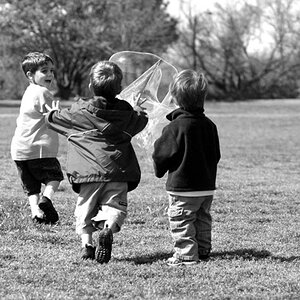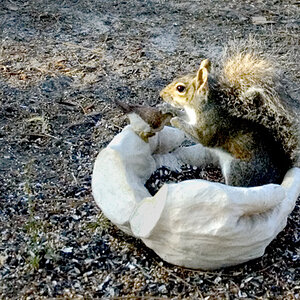RxForB3
No longer a newbie, moving up!
- Joined
- Feb 10, 2012
- Messages
- 654
- Reaction score
- 76
- Location
- Yakima, WA
- Can others edit my Photos
- Photos OK to edit
I have a Canon 6D, but I'd like people to chime in that have other cameras, as well. I asked this question long ago when I first got the camera, but I don't think many people had experience with it, so I'll ask again...
I do lots of night shots and set the exposure manually. However, I want to do timelapses of sunset to stars and such. For this, I would prefer for the camera to automatically correct the exposure. My problem is that the camera can't seem to auto-expose properly in dark settings. For instance, if I set the camera in Av mode, ISO at auto with a max of 3200. f/8, and leave the lens cap on, it thinks the appropriate exposure should be 2.5 seconds at ISO 3200. Why?? Even at night when there IS an appropriate amount of light to expose at 25 seconds, ISO 3200, f/2.8 or such, it chooses to way underexpose.
Any thoughts or suggestions?
I do lots of night shots and set the exposure manually. However, I want to do timelapses of sunset to stars and such. For this, I would prefer for the camera to automatically correct the exposure. My problem is that the camera can't seem to auto-expose properly in dark settings. For instance, if I set the camera in Av mode, ISO at auto with a max of 3200. f/8, and leave the lens cap on, it thinks the appropriate exposure should be 2.5 seconds at ISO 3200. Why?? Even at night when there IS an appropriate amount of light to expose at 25 seconds, ISO 3200, f/2.8 or such, it chooses to way underexpose.
Any thoughts or suggestions?




![[No title]](/data/xfmg/thumbnail/36/36395-66eaff4565ecf4245f13a9c469a9273b.jpg?1619737548)
![[No title]](/data/xfmg/thumbnail/39/39511-592cbd68b1d797ffce7e41e4fbfed890.jpg?1619739066)
![[No title]](/data/xfmg/thumbnail/41/41798-aacfc8368463d919cba743fe318706b6.jpg?1619739897)
![[No title]](/data/xfmg/thumbnail/39/39509-3c2c5856429b4b8ff3cf44cd3b2afa8c.jpg?1619739064)
![[No title]](/data/xfmg/thumbnail/32/32161-a5da499a329f1fae945778aac75d4442.jpg?1619735234)
![[No title]](/data/xfmg/thumbnail/36/36393-86ce601930c671b92b6df002b7fcbd0b.jpg?1619737548)
![[No title]](/data/xfmg/thumbnail/32/32631-60d0db057ee085953a0921e337396654.jpg?1619735552)